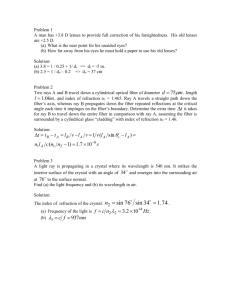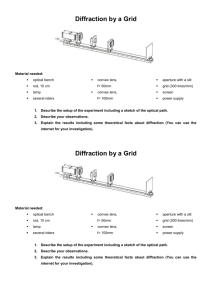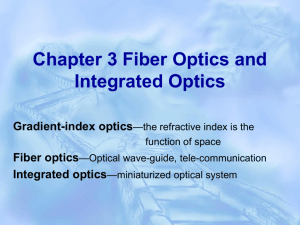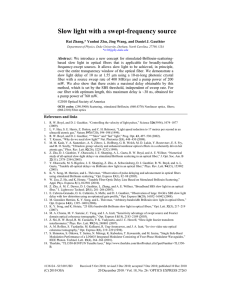ME 557 Howmwork #1
advertisement
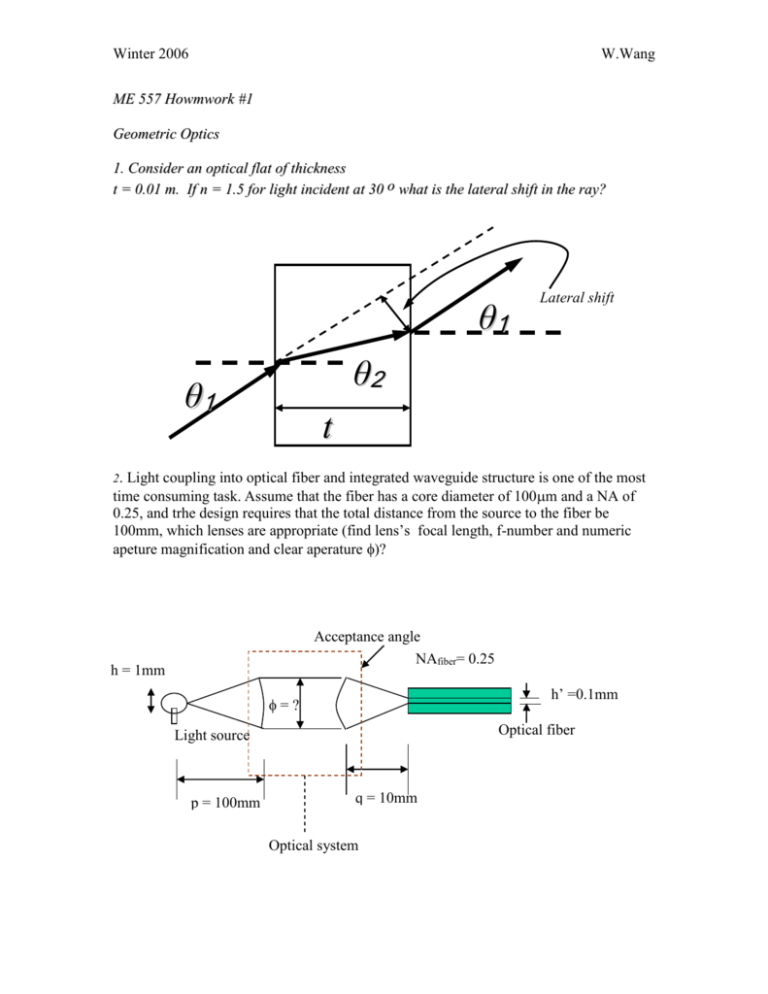
Winter 2006 W.Wang ME 557 Howmwork #1 Geometric Optics 1. Consider an optical flat of thickness t = 0.01 m. If n = 1.5 for light incident at 30 o what is the lateral shift in the ray? θ1 Lateral shift θ2 θ1 t 2. Light coupling into optical fiber and integrated waveguide structure is one of the most time consuming task. Assume that the fiber has a core diameter of 100m and a NA of 0.25, and trhe design requires that the total distance from the source to the fiber be 100mm, which lenses are appropriate (find lens’s focal length, f-number and numeric apeture magnification and clear aperature )? Acceptance angle NAfiber= 0.25 h = 1mm h’ =0.1mm =? Optical fiber Light source p = 100mm q = 10mm Optical system Winter 2006 W.Wang 3. Fiber coupling spheres. Tiny glass balls are often used as lenses to couple light into and out of optical fibers. The fiber end is located at a distance f from the sphere. For a sphere of radius a=1 mm and refractive index n =1.8, determine f such that a ray parallel to the optical axis at a distance y=0.7mm is focused onto the fiber, as illustrated in figure Ball lens fiber y 4. Derive the focal length for the general and bi-concave lenses. 5. Derive expression for effective focal length for two or more lenses system. 6. Show the graphical location of image for a three lenses system (thin lens approximation) Winter 2006 W.Wang Matrix Optics 1. Using ray- transfer matrix and find a relationship between radius R in terms of indices of nair, nlens and d where a diverging beam after going through this planar-convex lens can be collimated. 2. Remember the beam is diverge from a fiber, and after going through the lens system, the beam is a collimated with a beam diameter D. please find the ray-transfer matrix for the following lens system. fiber convex concave convex convex





